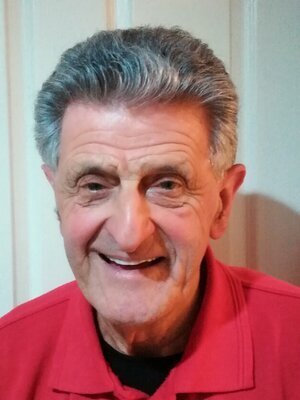A slippery slope … or is it?
By Neville Idour
My wife and I played in a recent Coronet Golf Tour event in Queenstown which gave rise to conjecture about the accuracy of the latest slope ratings.
I will try not to bore you with too many statistics but first let us look at the slope and course ratings of the four courses played and the average stableford scores for both men and women on each course which provided the questioning. Bear in mind playing conditions were, for the most part, good.
Of courses played mens stats from the white tees were in the following order: average stableford scores, slope rating and course rating.
Remarkables, Millbrook: 33.36, 127, 69.6.
Queenstown GC: 31.57, 128, 71.2.
Jacks Point: 27.14, 128, 71.7.
Coronet, Millbrook: 27, 122, 68.8.
Women’s stats were:-
Remarkables, Millbrook: 32.54, 123, 70.
Queenstown GC: 31.54, 122, 72.8.
Jacks Point: 26.75, 123, 71.9.
Coronet, Millbrook: 23.69, 118, 69.2.
It is easy to see why questions were raised. The slope and course ratings for both men and women indicate that the Coronet course is significantly kinder than the other three which have similar ratings. Yet the average stableford scoring for the men was six and eight points less than Remarkables and Queenstown but, not surprisingly, similar to Jacks Point which many felt was the most challenging course.
The women had even greater disparity with Coronet the most difficult during the event and bear in mind playing stableford scoring reduces the number of shots recorded for handicapping.
So do we conclude there are mistakes in the rating of Millbrook’s Coronet course. Definitely not according to Golf New Zealand’s handicapping and golf services' manager Phil Aickin.
First of all just what are the course ratings and slope ratings? Put simply course rating is an evaluation of the difficulty of a golf course for scratch golfers. This is arrived at from an estimate of the average scores of the best 50 percent of rounds played by scratch golfers at the course being rated. So a scratch golfer can be expected to average that number of strokes when playing that course. In the case of Coronet that's 68.8 for men and 69.2 for women.
On the other hand slope rating is a measurement of the difficulty for bogey golfers relative to the course rating. In other words the golfer scoring 18 over par or a bogey on each hole.
Maybe we can sum it up this way. Course rating tells the best golfers how hard a golf course actually plays while slope rating indicates how much harder the course plays for regular, average, not the best golfers. The minimum slope rating is 55 and the maximum 155 so the higher the slope the more difficult it is.
Aickin explains: “For well over a century handicapping and course rating has been regarded as an inexact science. But the evolution of both has been beneficial for equitable competition. And both play a significant part in providing the best platform for competition.”
The resources and effort being applied to this ongoing process are to be applauded. Aickin highlights this: “Last year I trained and retrained over 200 volunteers, spending two days in every district. Day one was a class room presentation and then the second day the full rating of a golf course. Just like the rules of golf, the course rating process has small improvements every few years.”
Course rating is a very thorough assessment and requires a team of trained volunteers to circuit the course and gather data which is then used to calculate point values for the many areas of consideration as we shall see.
Aickin explained the various areas points values are allocated to. The first consideration is the measured length of each set of tees being rated.
Then it is to assess the effective playing length factors as follows.
Roll: We consider in spring and autumn. Firm reduces length. Soft adds length.
Elevation: From tee to green.
Wind: Niwa (National Institute of Weather and Atmospheric Research) has provided the average daily wind speed at each course.
Doglegs: We rate for a scratch and bogey golfer. Where tee shots finish. Layup? Take shorter route?
Forced layups: Adds length.
Altitude: The ball flies further.
The other considerations are the various possible obstacles such as:-
Topogrophy: Elevations and fairway variations
Faiways: Width and challenge of hitting the fairway.
Green target.
Rough and Recoverability: Average length of rough.
Bunkers are all recorded plus their depth.
Penalty areas and trees.
Green surface: These are measured for 1. Flat or gentle slope. 2.Moderate contour or slope. 3. Highly contoured or steeply sloped.
Points' values are assigned to each of the above then added to the USGA database which provides the course rating, bogey rating and slope number.
It is clear that course rating is a very thorough assessment of a golf course with exactly the same formula used for all. It is not a case of one person wandering round a course. It is a dedicated team effort.
Aickin adds: ``One of the great challenges in our game is nature. A course can play very differently to the way it has been rated and the system has two things to counter that situation.
``First is that a handicap index is based on the best eight score differentials in the most recent 20 scores. Second is the playing conditions calculation (PCC) which is the assessment of all scores posted on that day which can lower the rating by one or increase it by up to three.”
“There are 34,000 golf courses worldwide and for most they are assessed using the same system we have been using for over 20 years. So for the first time ever we can play on any USGA rated golf course around the world and our card can be entered for handicap purposes.”
Aickin also acknowledged we may have felt that the rating of Coronet the day we played was inaccurate because the scoring was so poor. However a +3 PCC was applied that day which increased the course rating to 71.7 which in retrospect was more appropriate.
So what can we conclude from all of this?
For this bogey golfer It has been educational but the key thing is the formula is the same for every course and that being the case we can sleep easy knowing the assessments are as good as possible. As Aickin said, it has always been an inexact science. Now it is as exact as possible but where nature is involved it is impossible to achieve perfection.
For me, the bottom line is whatever a course offers up in ratings or difficulty it is the same for everyone as we found out at Coronet. So as long as we are on an even playing field nothing else matters. It is hard enough just getting the ball in the hole.

